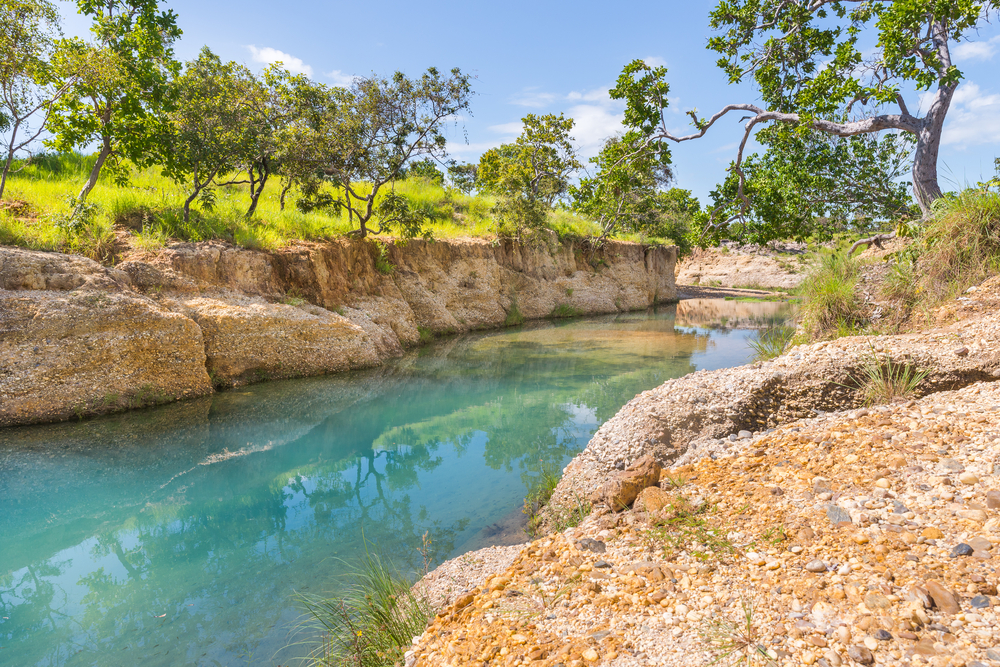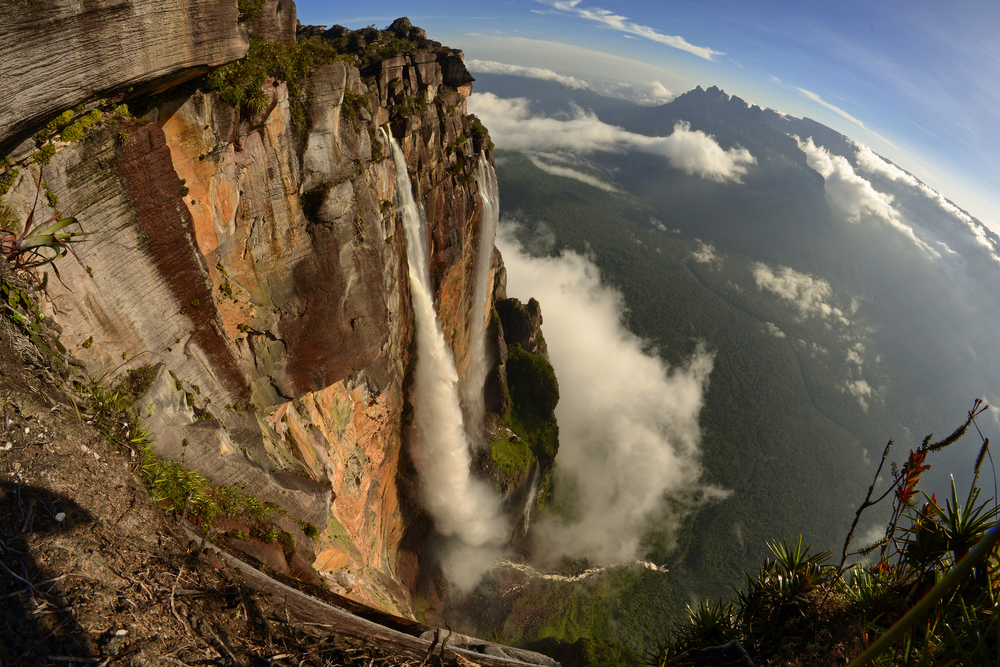Venezuela has a total of 43 national parks. These protected areas encompass a wide range of ecosystems and landscapes, contributing to the conservation of Venezuela’s rich biodiversity and natural heritage.
About Venezuela National Parks
Venezuela, a country of extraordinary natural beauty, is home to 43 national parks that protect its diverse ecosystems, ranging from lush tropical rainforests to rugged mountain peaks and expansive wetlands. These parks preserve the country’s rich biodiversity, stunning landscapes, and cultural heritage while offering opportunities for adventure and sustainable tourism. Among Venezuela’s many protected areas, several national parks stand out for their ecological importance and global recognition.
Canaima National Park, a UNESCO World Heritage Site, is one of Venezuela’s most iconic and breathtaking destinations. Spanning nearly 30,000 square kilometers in the Gran Sabana region, Canaima is home to the majestic Angel Falls, the world’s tallest uninterrupted waterfall at 979 meters. The park’s unique table-top mountains, or tepuis, such as Mount Roraima, are geological wonders that harbor endemic plant and animal species. Visitors can hike to the top of tepuis, take boat trips to view Angel Falls, or marvel at the park’s dramatic savannahs and ancient rock formations.
Henri Pittier National Park, Venezuela’s oldest national park, is located in the coastal region of Aragua. Known for its incredible biodiversity, the park transitions from lush cloud forests in the mountains to sandy beaches along the Caribbean Sea. It is a birdwatcher’s paradise, with over 500 bird species recorded, including toucans, macaws, and hummingbirds. Henri Pittier also features hiking trails, waterfalls, and cultural landmarks, making it a favorite for both nature enthusiasts and beachgoers.
Médanos de Coro National Park offers a strikingly different landscape with its vast sand dunes, some reaching heights of up to 40 meters. Located in the arid region of Falcón, the park provides a surreal desert environment rarely found in the tropics. Visitors can explore the dunes by foot or sandboard and enjoy the unique ecosystems that include lagoons, mangroves, and xerophytic vegetation. Médanos de Coro is a fascinating destination that contrasts sharply with Venezuela’s other lush landscapes.
Morrocoy National Park, along Venezuela’s Caribbean coastline, is a paradise of coral reefs, cays, and mangroves. The park’s turquoise waters are home to vibrant marine life, making it a popular destination for snorkeling and diving. Its islands and beaches, such as Cayo Sombrero and Playa Mero, are beloved by locals and tourists alike. Morrocoy is also an important sanctuary for sea turtles and numerous bird species, including flamingos and herons.
Sierra Nevada National Park, in the Andes, showcases Venezuela’s mountainous beauty with snow-capped peaks, high-altitude lakes, and páramo ecosystems. The park is home to Mount Bolívar and Mount Humboldt, two of the country’s highest peaks, which attract climbers and trekkers seeking challenging adventures. Its scenic trails also reveal a wealth of biodiversity, including condors, spectacled bears, and unique alpine vegetation.
Venezuela’s national parks face significant challenges, including deforestation, illegal mining, and political instability, which hinder conservation efforts. However, local communities and environmental organizations are working to address these issues through awareness campaigns, ecotourism, and sustainable development initiatives. These efforts aim to preserve Venezuela’s natural wonders for future generations.
Venezuela National Parks

Aguaro-Guariquito National Park
Explore Now
Canaima National Park
Explore Now
Cerro El Copey National Park
Explore Now
Cerro Saroche National Park
Explore Now
Ciénagas de Juan Manuel National Park
Explore Now
Cueva de la Quebrada del Toro National Park
Explore Now
Cueva del Guácharo National Park
Explore Now
Delta del Orinoco National Park
Explore Now
Dinira National Park
Explore Now
Duida-Marahuaca National Park
Explore Now
El Ávila National Park
Explore Now
El Guache National Park
Explore Now
Guaramacal National Park
Explore Now
Guatopo National Park
Explore Now
Henri Pittier National Park
Explore Now
Laguna de La Restinga National Park
Explore Now
Laguna de Tacarigua National Park
Explore Now
Macarao National Park
Explore Now
Médanos de Coro National Park
Explore Now
Mochima National Park
Explore Now
Morrocoy National Park
Explore Now
Parima Tapirapecó National Park
Explore Now
Península de Paria National Park
Explore Now
San Esteban National Park
Explore Now
Santos Luzardo National Park
Explore Now
Serranía de la Neblina National Park
Explore Now
Sierra de Perijá National Park
Explore Now
Sierra La Culata National Park
Explore Now
Sierra Nevado National Park
Explore Now
Tapo-Caparo National Park
Explore Now
Terepaima National Park
Explore Now
Tirgua National Park
Explore Now
Turuépano National Park
Explore Now
Yacambú National Park
Explore Now
Yapacana National Park
Explore Now
Yurubí National Park
Explore NowFAQ’s
1. How many national parks are there in Venezuela?
2. What is the largest national park in Venezuela?
The largest national park in Venezuela is Canaima National Park (Parque Nacional Canaima). Located in the southeastern part of the country, Canaima National Park covers an area of approximately 30,000 square kilometers (about 11,583 square miles).
Established in 1962, Canaima National Park is renowned for its stunning natural beauty and diverse landscapes, including vast savannas, tepuis (tabletop mountains), dense rainforests, and breathtaking waterfalls, including the iconic Angel Falls, the highest waterfall in the world. The park is also home to a rich variety of plant and animal species, many of which are endemic to the region.
Canaima National Park holds significant cultural and ecological importance and is recognized as a UNESCO World Heritage Site. It attracts visitors from around the world who come to marvel at its spectacular scenery, explore its unique ecosystems, and experience indigenous cultures.
3. What is the smallest national park in Venezuela?
The smallest national parks is Cueva de la Quebrada del Toro National Park, known locally as Parque Nacional Cueva de la Quebrada del Toro. Established on March 21, 1961, the park encompasses approximately 48.85 square kilometers (18.86 square miles).
It provides habitat for various plant and animal species and offers opportunities for outdoor recreation and ecotourism activities such as hiking, birdwatching, and nature appreciation.
4. What was the first national park in Venezuela?
The first national park established in Venezuela is Henri Pittier National Park (Parque Nacional Henri Pittier). Established on February 13, 1937, Henri Pittier National Park is located in the states of Aragua and Carabobo, in the northern coastal region of Venezuela.
Named after Swiss geographer and naturalist Henri Pittier, the park covers an area of approximately 107,800 hectares (about 417 square miles). It encompasses diverse ecosystems, including cloud forests, lowland rainforests, and coastal mangroves, as well as rivers, waterfalls, and beaches.
Henri Pittier National Park is known for its rich biodiversity, scenic beauty, and recreational opportunities. It provides habitat for a wide variety of plant and animal species, including endemic and endangered species. The park also offers visitors opportunities for hiking, birdwatching, camping, and nature appreciation, making it a popular destination for both locals and tourists alike.
5. What is the most popular national park in Venezuela?
The most popular national park in Venezuela is Canaima National Park, home to the world-renowned Angel Falls, the highest uninterrupted waterfall in the world at 3,212 feet (979 meters).
The park spans nearly 30,000 square kilometers (12,000 square miles) and is characterized by its breathtaking tepuis (tabletop mountains) and diverse ecosystems ranging from savannas to dense rainforests.
Canaima is also part of a UNESCO World Heritage Site and plays a key role in the preservation of Venezuela’s rich biodiversity and indigenous cultures.
6. What percentage of Venezuela's land area is protected through official National Parks?
Approximately 21% of Venezuela’s total land area is protected through official national parks and reserves, covering about 210,000 square kilometers (81,000 square miles).
Venezuela’s national parks are essential to preserving the country’s rich biodiversity and stunning landscapes, ranging from Andean mountain ranges to Amazon rainforests.
7. What other protected areas are there in Venezuela?
In addition to national parks, Venezuela is home to several important nature reserves and conservation areas, such as the Imataca Forest Reserve and Ciénagas de Juan Manuel National Reserve.
The Delta del Orinoco Biosphere Reserveis another key conservation area, protecting critical wetlands and the Orinoco River delta.
These areas are vital to preserving Venezuela’s unique ecosystems, including rainforests, wetlands, and savannas, which are rich in flora and fauna.
8. What nature attractions does Venezuela have apart from National Parks?
Apart from its national parks, Venezuela boasts other impressive natural attractions, including the Los Llanos savanna, renowned for its abundant wildlife and bird-watching opportunities.
The Orinoco River, one of the longest rivers in South America, offers boat tours that showcase the region’s diverse ecosystems.
The Roraima Plateau, shared with Brazil and Guyana, is a striking geological formation that is a major draw for adventure seekers and hikers.
9. What species are endemic and unique to Venezuela alone?
Venezuela is home to numerous endemic species, including the Venezuelan Troupial (Icterus icterus), the country’s national bird. Another iconic species is the Guri Tepui tree frog (Tepuihyla rodriguezi), found only in the tepuis of Canaima National Park.
The Golden Poison Frog and various species of orchids and bromeliads are also endemic to Venezuela’s unique ecosystems.
10. What is Venezuela's main international airport?
Venezuela’s main international airport is Simón Bolívar International Airport (CCS), located near the capital, Caracas.
Other important international airports include Arturo Michelena International Airport (VLN) in Valencia and La Chinita International Airport (MAR) in Maracaibo, which also serve as key entry points for international travelers.
11. What international airline companies fly into Venezuela?
International airlines flying into Venezuela include:
- Air Europa
- American Airlines
- Avior Airlines
- Copa Airlines
- Cubana de Aviación
- Iberia
- Turkish Airlines
12. Who manages the national parks of Venezuela?
The national parks in Venezuela are managed by the Instituto Nacional de Parques (INPARQUES), which is responsible for the conservation and management of protected areas across the country.
INPARQUES works in collaboration with various environmental organizations to promote the sustainable use of these areas.
- Instituto Nacional de Parques (INPARQUES): inparques.gob.ve









































































